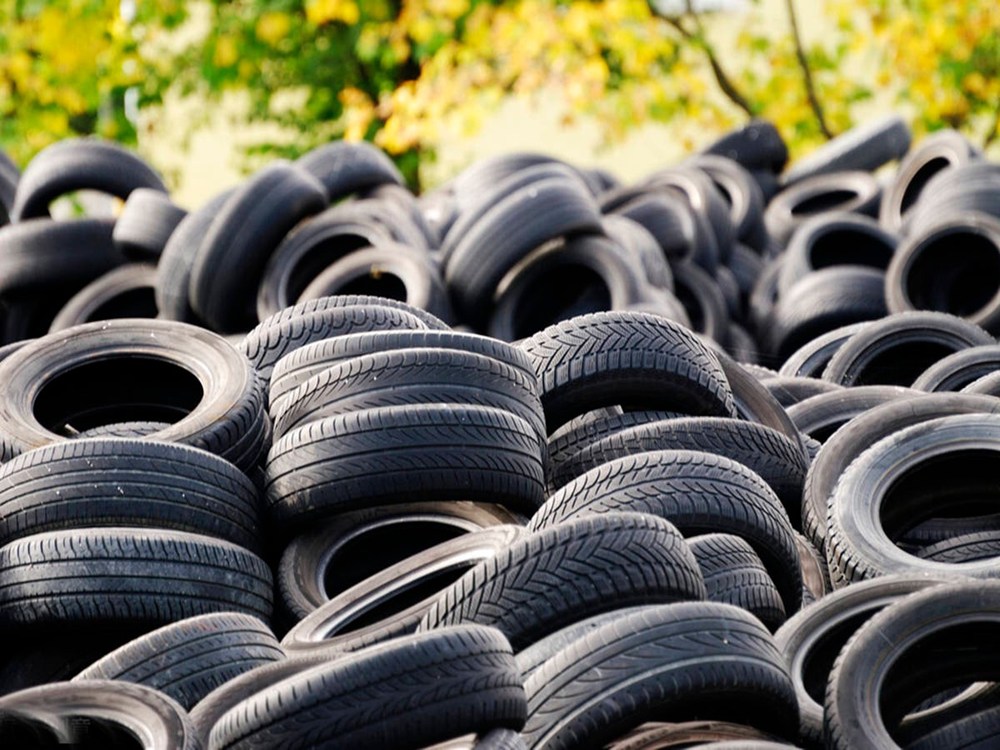Turning "Black Pollution" into Green Energy: The Power of Tire-Derived Fuel
Jan 01, 2024
Scrap tires, known as "black pollution" within the industry, present a major global waste challenge. Their durability and volume make them difficult to dispose of. However, their high calorific value and low moisture content also make them a powerful alternative fuel, particularly for the cement industry. This process of converting whole tires into a usable energy source is both an environmental necessity and an economic opportunity.
1. Tire-Derived Fuel (TDF) is a Greener Choice
Research from a French company shows that scrap tires contain biomass components like natural rubber, rayon, and stearic acid. Passenger car tires are 17-20% biomass, while truck tires are 28-30% biomass. Tests on burned Tire-Derived Fuel (TDF) have yielded positive environmental results:
It emits less carbon dioxide (CO₂), sulfur dioxide (SO₂), and nitrogen oxides (NOx) than high-sulfur coal.
The ash residue from burned tires contains fewer heavy metals than ash from some types of coal.
Tires generate as much energy as oil, 25-50% more energy than coal, and 100-200% more energy than wood when burned.
2. TDF is Widely Used Around the World
The use of TDF began in Germany in the 1950s and is now common internationally.
In the United States, over 40% of cement plants burn scrap tires for fuel.
In Japan, approximately 10% of scrap tires are used as alternative fuel in cement kilns.
In Eastern European countries like Poland and Ukraine, scrap tires are a primary energy source for rotary kilns, achieving a fuel substitution rate of over 60%.
Major global cement companies are also significant users:
Holcim: 10% of alternative fuel
Cemex: 16% of alternative fuel
Heidelberg Cement: 11.6% of alternative fuel
Lafarge: 19.7% of alternative fuel
While TDF was not widely used in China before, the country's push to reduce coal consumption has led to growing adoption in the cement industry. Now, over 6% of cement kilns in China are equipped to co-process scrap tires, unlocking the sector's waste-utilization and environmental potential.
3. Industries That Use TDF
The high heat value of scrap tires makes them an excellent alternative fuel for energy-intensive industries.
Cement Plants: The cement industry uses more tire-derived fuel than any other sector. According to the U.S. Environmental Protection Agency (EPA), cement kilns in the U.S. burn approximately 71 million scrap tires every year.
Power Plants: Utility boilers, which traditionally burn coal to generate electricity, use about 42 million tires annually. The high heat value and low cost of TDF make it an ideal supplemental fuel.
Paper Mills: The pulp and paper industry uses roughly 30 million tires each year to fuel its boilers.
Using scrap tires as fuel solves two problems at once: it reduces "black pollution" from waste tires and cuts down on coal consumption. This creates a circular economy that is both practical and green. The successful global use of TDF proves that what was once a major waste problem can now be a source of clean, efficient energy.
Conclusion The journey from a pile of scrap tires to a source of clean energy is a powerful example of innovation. Turning "black pollution" into fuel helps protect our environment and conserves natural resources. As technology improves, the use of TDF is expected to grow, offering a sustainable solution for industries worldwide.
続きを読む




